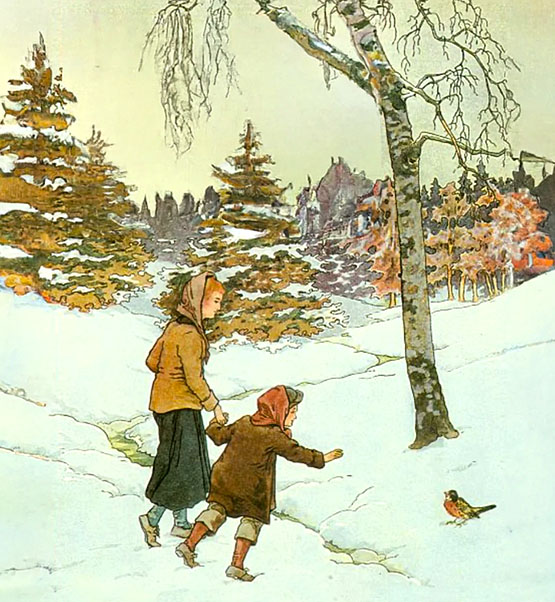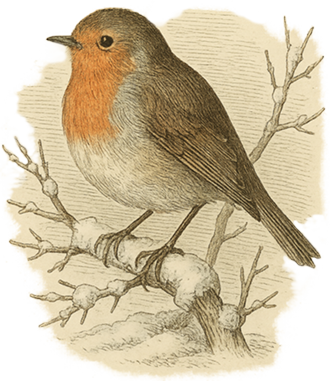Little Robin Grieves
The little robin grieves
When the snow is on the ground,
For the trees have no leaves,
And no berries can be found.
The air is cold, the worms are hid;
For robin here what can be done?
Let's strow around some crumbs of bread,
And then he'll live till snow is gone.

Origins
This rhyme appears in 19th-century English and American nursery collections, often under the titles The Little Robin Grieves or Little Robin Redbreast. Unlike the nonsense jingles or satirical verses that filled many early nursery books, it belongs to the gentler class of seasonal rhymes. Its focus is on the natural world and the hardships of winter.
Meaning
The verse paints a simple picture: a robin in winter, hungry and cold, with no leaves on the trees, no berries, and no worms to be found. Instead of ending in misfortune, the rhyme turns to the listener — urging children to scatter crumbs of bread so the bird may survive until spring returns. It is both descriptive and instructional, teaching compassion through a small act of care.
 A Song of Kindness
A Song of Kindness
For Victorian families, rhymes like this doubled as lessons in sympathy and charity. Feeding birds in winter became a moral exercise wrapped in play, reminding children that even the smallest creatures needed help. The robin, a bird deeply rooted in English folklore and often tied to Christmas imagery, served as a perfect symbol of endurance and gentle pity. Through its tender appeal, Little Robin Grieves has remained a quiet reminder that kindness can be taught as easily as a nursery rhyme.

